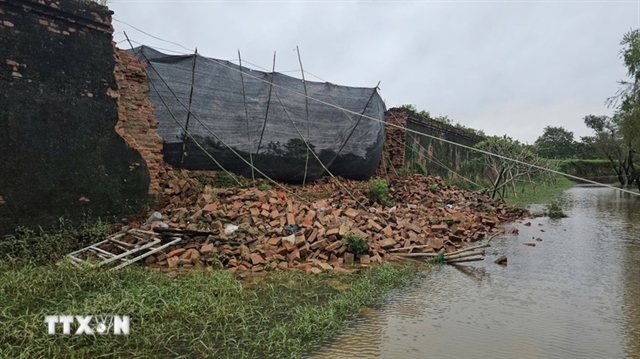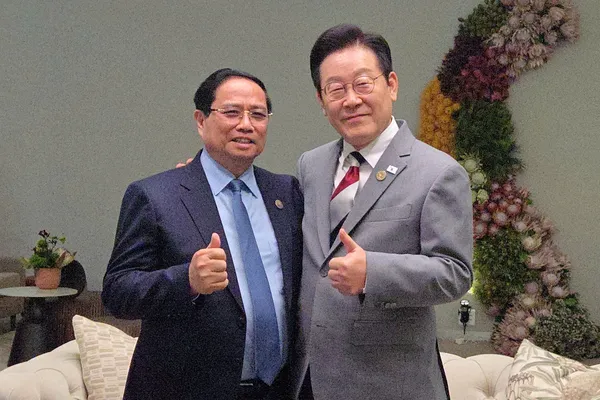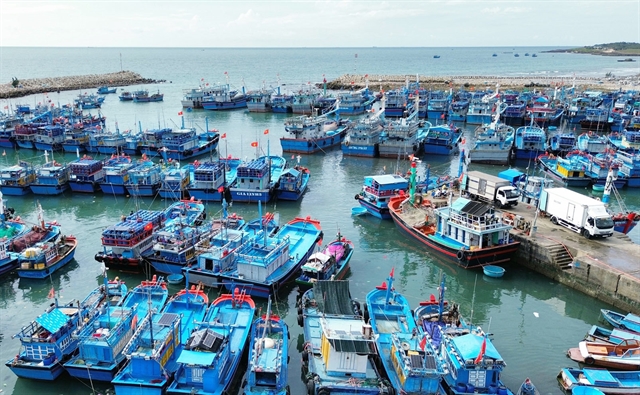 Opinion
Opinion

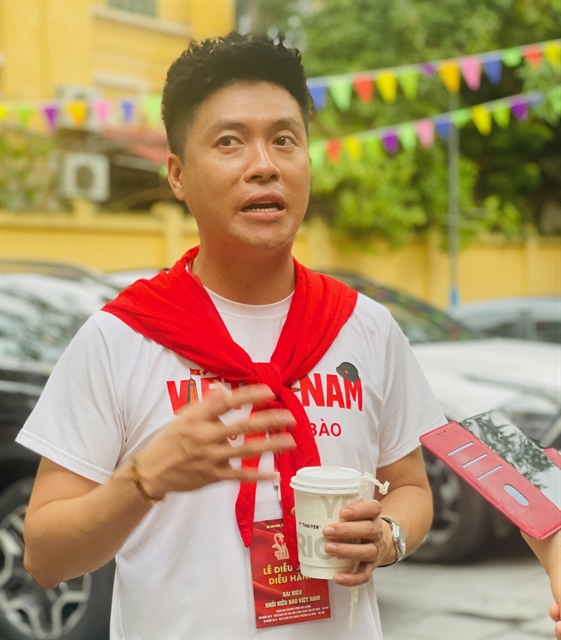 |
| Nguyễn Duy Anh, general secretary of the Global Network for Vietnamese Language Teaching, VNS Photos Nguyễn Khánh Chi |
Nguyễn Duy Anh, general secretary of the Global Network for Vietnamese Language and Culture Teaching, and head of the Vietnamese Association in Fukuoka City, Japan, spoke about the network's launch on September 29 and the growing need for upholding the traditional culture among the over 6 million overseas Vietnamese.
As the founder of the Global Network for Vietnamese Language and Culture Teaching, could you elaborate on the initiative?
I have been living in Japan for 20 years and am currently the Principal of the GAG Japanese Language Academy in Fukuoka. Throughout this period, I’ve always asked myself: “What can I do to preserve Vietnamese culture and language for future generations?” That very question inspired me to dedicate myself to teaching Vietnamese to the children of overseas Vietnamese families.
In fact, since 2019, we’ve been running the first Vietnamese language class in Fukuoka. Then came the pandemic, and it seemed everything would come to a halt. But in the midst of those challenges, thanks to the invaluable support of the Consulate General of Việt Nam in Fukuoka, especially Consul General Vũ Chi Mai, and the solidarity of the Vietnamese community, we were able to reset and rebuild the class from scratch.
It was during that time that I felt more deeply than ever the love for the Vietnamese language and the power of community connection. The classes were reopened, completely free of charge. From teachers and facilities to textbooks, everything was provided in the spirit of volunteerism.
Building on that foundation, and with the official support of the Ministry of Foreign Affairs’ State Committee for Overseas Vietnamese, along with the collaboration of many intellectuals and dedicated teachers from the Vietnamese diaspora across five continents, the Global Network for Vietnamese Language Teaching came into being.
The network operates on three core principles: volunteerism, sharing and spreading. The coordinating board includes regional representatives from Europe, North America, Asia, and Australia, a specialised committee responsible for curriculum and teaching methodology and a communications team to connect and share information. While most activities are conducted online, we regularly organise seminars, training sessions and workshops, maintaining close ties with institutions in Việt Nam.
This network is not an administrative body, but rather a shared home for those who are passionate about the Vietnamese language to come together and take action.
Could you speak about initial outcomes of the network?
The network was established in May. Though still in its early days, thanks to the support of the community and sponsorship from domestic institutions, we have grown rapidly. To date, the network has nearly 500 members, including teachers, volunteers and association staff across more than 30 countries and territories.
This is not only a useful reference channel for parents and students, but also a contribution to the formation of a global Vietnamese language ecosystem where classes, teachers and learners can find one another and together spread the love for the Vietnamese language.
One of our key achievements has been the launch of foundational projects, including the development of the Global Vietnamese Digital Map, an online tool that records, connects and shares information about Vietnamese language classes held by communities around the world.
A notable result is the emergence of an expanding system of overseas Vietnamese language classes from Europe to North America, from Japan and South Korea to Australia and New Zealand. The network also organises many online training courses and thematic seminars, and collaborates with domestic universities to invite lecturers for training programmes.
The digital map marks the beginning of building a global Vietnamese language ecosystem. In the past, each overseas Vietnamese class was like a small island, operating in isolation and lacking mutual awareness. Now, thanks to the digital map, all can be present on a shared platform. Anyone seeking a class, teacher or learning materials can connect with just a few clicks.
The greatest value of this ecosystem lies in its connectivity. It helps teachers feel less alone, offering a space to share challenges and seek professional support. Parents anywhere can quickly access information and choose suitable classes for their children. At the same time, the digital map enables domestic institutions to better understand the situation and develop more practical support policies.
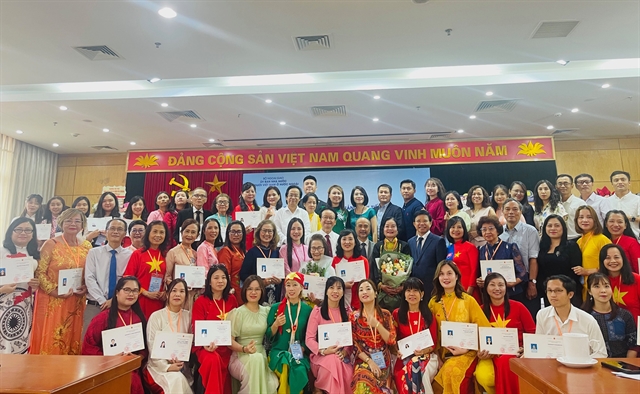 |
| Teachers of Vietnamese language overseas join a three-week training course in Hà Nội in August by the State Committee for Overseas Vietnamese. |
How significant is the teaching of Vietnamese to children of Vietnamese communities overseas?
Vietnamese is the soul of the nation. If overseas generations lose their Vietnamese language, their bond with the homeland will inevitably fade. On the contrary, by preserving Vietnamese, we safeguard our memories, customs, traditions, and national identity.
For children, learning Vietnamese is not just about communicating with grandparents and parents; it’s about understanding culture, history and roots. In the context of global integration, many children grow up in multilingual environments. The language provides them with a foundation, preventing them from being assimilated while opening up career opportunities as they become bridges for trade and cultural exchange between Việt Nam and the world.
I often say that each Vietnamese language class for overseas communities is a miniature cultural embassy of Việt Nam abroad. This value goes far beyond education; it contributes to people-to-people diplomacy and the nation's image.
As mentioned, the global Vietnamese language ecosystem will become a vibrant data repository of teaching and learning activities among overseas Vietnamese. It is not only a tool to sustain language classes, but also a channel to promote Vietnamese culture, helping international friends witness the vitality and aspiration of the Vietnamese diaspora to preserve their mother tongue.
What are challenges in organising and maintaining such language classes for overseas Vietnamese children? What about the availability of textbooks and related materials?
The first challenge is the lack of professional teachers. Many classes are maintained by members of community associations or volunteer university students. They have great dedication, but most have not received formal training in teaching Vietnamese as a foreign language. This leads to inconsistencies in teaching methods and approaches to students.
The second challenge is the curriculum and materials. Textbooks published in Việt Nam are mainly designed for native Vietnamese students and may not be suitable for overseas Vietnamese children, who often learn Vietnamese as a second language. Many materials focus heavily on spelling and grammar, while these children need content that is relatable, lively and connected to everyday life. As a result, many places have to create their own materials, leading to fragmentation and a lack of systematisation.
The network has made efforts to collect, digitise, and share curricula from various sources, while also encouraging the development of customised materials for overseas Vietnamese children.
We’ve established an open library with hundreds of books, lecture files and illustrated images. Notably, some curricula are created by overseas Vietnamese themselves, reflecting the learning needs in a far-from-home environment.
Additionally, infrastructure and funding are significant issues. Some classes have to borrow community rooms, churches or even conduct lessons online, but many classrooms are offered fee-free locations. Yet every difficulty is compensated by love and the desire to preserve the Vietnamese language for future generations.
In particular, we have received valuable support from the State Committee for Overseas Vietnamese and teaching expertise from Việt Nam. Numerous training courses have been organised, with the direct participation of Professor Nguyễn Minh Thuyết, a senior lecturer at the Faculty of Linguistics, University of Social Sciences and Humanities, Vietnam National University Hà Nội, from 1990 to 2003, and lecturers from Vietnamese universities.
Every Saturday morning, overseas Vietnamese teachers can join online sessions on teaching methods for Vietnamese as a foreign language. Each session attracts 400–500 participants, forming a large international classroom where they gain access to modern pedagogical knowledge and have the opportunity to connect and exchange experiences.
This is a meaningful source of encouragement and practical support, contributing to improving the quality of Vietnamese language teaching and learning within the community. VNS


